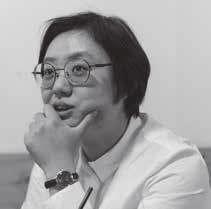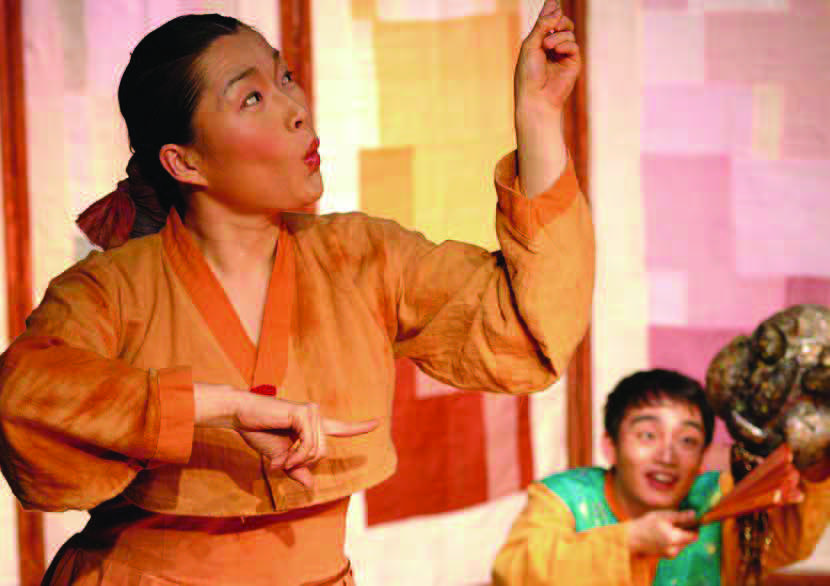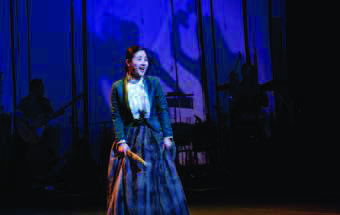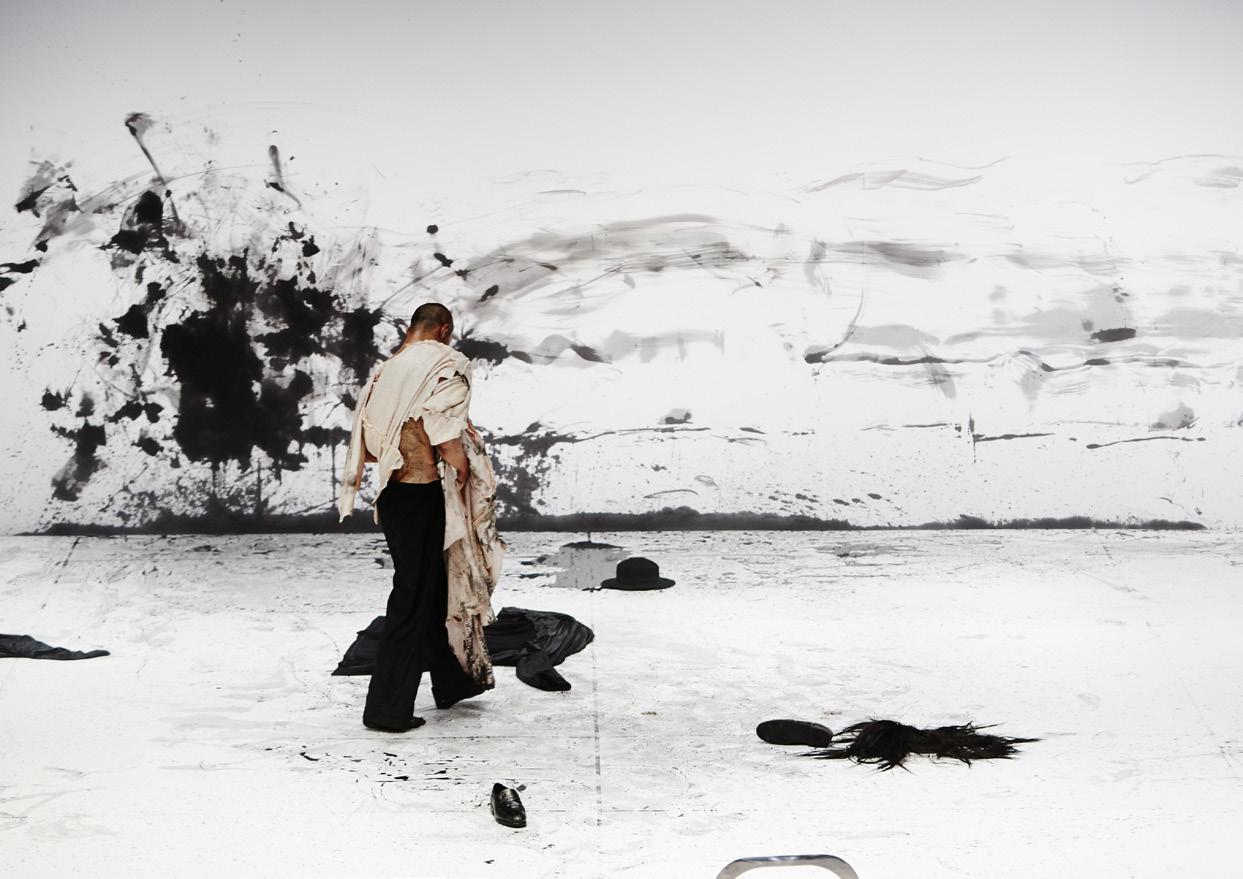Performance Info
NAM In woo
(Theatre director. Head of Play BST)
: Tradition should be flexible enough to be altered freely
Your work based on traditional music and theatre is impressive. Please tell us how you got into working extensively on traditional art forms after studying general theatre.
It all began after I read the English version of Waiting for Godot. It was a book that I had read in order to study English and I related to it greatly because at the time the Korean society was filled with discontent regarding the military regime of the 1980s and at a more personal level, I felt an immense pressure in terms of university entrance exams. Eventually I chose to study theatre in university to the dismay of my parents.
In terms of traditional art forms, I had always been exposed to them. The rituals of a shaman, the rhythms of the candy seller and the occasional drumming sounds were all familiar to me because I had grown up in the country side. Also, the site in front of the US military base, which was a 15-minute fast walk away from my house, was a familiar site to me as well. Also, we sometimes had American military tenants with their Korean wives, living on the second floor of our house. When I think about it now, these two conflicting and
segregated scenes I was exposed to during my formative years had a huge impact on my occupation.
That also goes for my studies in theatre. On one hand I had the western grammar of theatre and on the other an instinct for Korean movements and sound and those two hands would not come together. During an improv class, I was shocked by a foreign professor talking about Taoist ideas. Until then I had never imagined merging Western and Eastern theatre traditions. Afterwards, I reconsidered theatre in my own terms. I realized that the stars aligned above my head, Korean myths and stories told by the neighborhood Shaman, all these things can be tools that I can use in theatre.
In that process I met by chance a haegeum player and gayageum player and the result of that collaboration was Gamoonjang (written by GOH Soon Duk, 2003) which is one of the principal pieces of my theatre company. I later met the traditional singer LEE Ja Ram and we worked on a pansori plan based on a Brecht piece and it was followed with Pansori Brecht’Sacheon-ga’ (written by LEE Jaram, 2007) and UKCHUK-GA (2011).
Is there anything in particular you try to capture when dealing with traditional Korean theatre?
There is something that is relatively liberating compared to those who pursue the traditional arts. It is the fact that I perceive tradition as not something that should be preserved at any cost but as something to be sensed. That is why I feel as though the spirit of tradition or the structure of tradition are tools for me to use. Although I do regard fundamentals are very important when it comes to all things. When I work with pansori, I try to take the minimalistic musical and dramatic structure and the emotions of the people into a more modern context by adjusting the details. It is because there are aspects of the rhythm and tempo of traditional art forms that modern audiences instinctively do not respond well to. Art is a living organism. I try not to see traditional art as a taxidermy of something that is already dead.
Musical plays or theatre pieces that are based on tradition is merely a small part of the universe of director NAM In Woo. Your work expands to contemporary pieces targeted towards adults to contemporary pieces that target children, dance direction and arts education. How does one artist balance all of these things.
For me art is every act that involves feeling and experience and communicating with others. So the contemporary dance projects, contemporary plays, my attitude towards tradition and arts education are all part of that. As I continue to have dialogue with the people
around me movement and tradition meet naturally and although I studied children’s productions extensively it is the most difficult and therefor I give particular attention to the work. It is a process of exploring the very essence of art and I got into arts education while studying theatre for children and adolescents. To me, arts education is a new art form and paradigm that allows us to experience art without differentiating audience and performer rather than an education process.
Although you work in such expansive fields, I do think you may have a philosophy that you consistently go by.
Everything that I do involves putting the spotlight on our regard towards those who are marginalized. For example, adolescent audience members are not only minors but are citizens who do not have the right to vote politically. Sometimes the productions are held outside of the theatre and in the schools and neighborhoods of these children.
I also try to tell stories that are commonly not told in the traditional theatre context. My name is OH Dong Gu (2013) that I directed was produced by the National Changgeuk Company and I decided that because it was a national production the story of sexual minorities must be told. I am not a particularly gender sensitive person. There are lots of stories that deal with political issues such as the candlelight revolution but the stories of gender, sexual minorities that are within our everyday lives are not frequently enough told. I believe that we need to tell real stories that influence our lives.
When it comes to productions for children and adolescents, exploring their feelings and their experiences and their truths is the way to approach the work in a thematic way.
Also, consistently asking myself whether my questions are justified is the basic attitude I have towards my work and my life.
The aforementioned Gamoonjang and Pansori Brecht’Sacheon-ga’ have been performed in numerous countries overseas. Is there a piece that had been performed internationally that had influenced your work philosophy or is there an international project that you are aiming for?
The Bridge (2002), that deals with the Korean War, was a production that involved collaborating with English artists and it was the piece that allowed me to experience differences in cultural understanding, communication, philosophies and audience reactions. Most of all I found it very refreshing and stimulating that all parties involved had different understandings and ideological opinions regarding the Korean War. I felt as though the essence of an international co production and the role of the theatre is to continuously ask the right questions regarding the different positions that we all take.
In Asia, where most countries experienced imperialism and detachment, tradition is often an obligation and a pressure that we sometimes wish to break away from. I wish to find out how people regard this issue in North East Asia and Europe through my work.
If you were to select one piece of your work that best represents your artistic direction?
I would say Gamoonjang created with all members of my company based on the play by GOH Soon Duk. It is Play BST’s repertory, which has been performed in Russia, Germany, Australia, Japan, Cameroon and Austria since the premiere in 2003. It is a family show based on Jeju Island’s shamanic myth, combined with minyo tunes from Jeju as well as traditional dance movements of ‘Goseong Ogwangdae.’ It was my second piece, but it had a great influence on my future work in many ways, in terms of the creative process itself, training the actors, thoughts on traditional and contemporary art forms as well as subject matters about independent women’s voice.
Production Details
- Director
NAM In woo
Reference
- E-mailskyperland@gmail.com












 PREV
PREV
.jpeg)
.jpg)
_(c)포스(FORCE).jpg)
_(c)장석현_코끼리들이 웃는다(SUKHYUN JANG_ELEPHANTS LAUGH).jpg)
.jpg)
.jpg)
_(c)한받(Hahn Vad).jpg)
_(c)비주얼씨어터 꽃(CCOT)(1).jpg)
_(c)봉앤줄 (BONGnJOULE)(1).jpg)
_(c)대한민국연극제 2019 (Korea Theater Festival 2019)(0).jpg)
_(c)몸꼴(Momggol)(1).jpg)
.png)
2018MODAFE_Taemin Cho (2).jpg)











